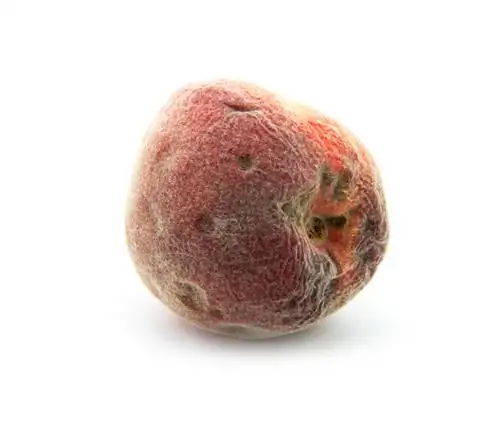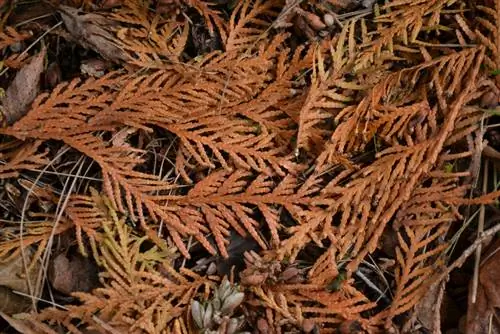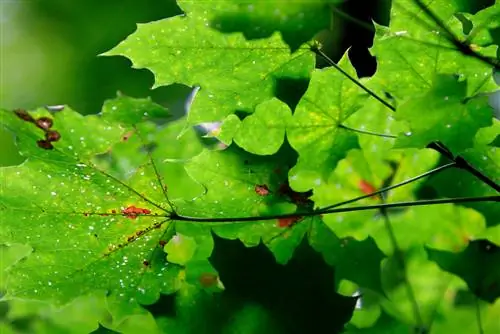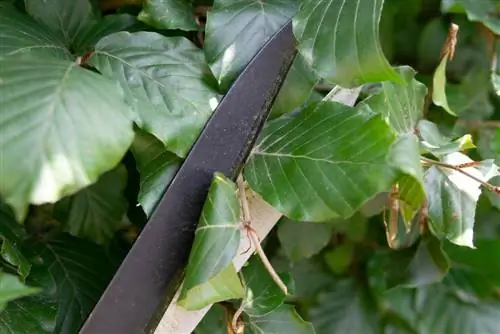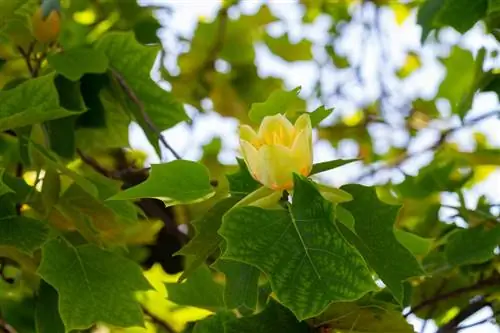- Author admin [email protected].
- Public 2023-12-16 16:46.
- Last modified 2025-01-23 11:19.
Many old types of peaches, e.g. B. Amsden, are insensitive to certain fungal diseases. Others, on the other hand, have been refined through targeted breeding to such an extent that their susceptibility to disease has also increased. Plant lovers will not be able to avoid a minimum of plant protection, including chemical ones.

Which fungal diseases can affect peach trees and how can I treat them?
Fungal infestation on peach trees can be caused by curl disease, monilia fruit rot, twig monilia, fruit tree canker, shotgun disease, peach powdery mildew or peach scab. To combat this, use fungicides, remove infected plant parts and ensure a protected location without waterlogging.
Common fungal diseases
The curl disease in particular often affects peaches, but it is not the only thing that endangers the trees. Many fungal pathogens have specialized in pome and stone fruit plants and therefore attack not only apples, pears, cherries and plums but also peaches, nectarines and apricots.
Fungal diseases at a glance
- Frizz disease
- Monilia fruit rot
- Branch Monilia / Lace Drought
- Fruit tree cancer
- Shotgun disease
- Peach mildew
- Peach scab
Fruit tree cancer
Fruit tree cancer is a fungal disease that, despite having the same name, has nothing to do with human cancer. The fungal spores penetrate through wounds, e.g. B. as a result of autumn pruning: after hail or frost, at cuts, etc., but also due to the many leaf scars that occur in autumn. Waterlogging, a high groundwater level, and too much nitrogen in the soil (e.g. caused by one-sided fertilization with manure or manure) promote the infestation. Therefore, only plant peach trees in suitable locations, because cold locations as well as moist and heavy soils promote their occurrence.
Fighting fruit tree cancer
The existing cancerous areas should be cut out into the he althy wood and treated with a wound care product (€17.00 on Amazon). Suitable wound care products include La Balsam, Spisin or Bayleton.
Shotgun disease
The cause of shotgun disease is the fungus Stigmina carpophilum. The disease manifests itself in reddish-brown spots on the leaves, which later die and fall out of the leaf tissue. The leaves look like they have holes in them. The bark can also be affected by dark necrosis, i.e. H. dead tissue. In addition to the leaves, shoots and fruits can also be infected. The fungus overwinters on leaves, fruit mummies, in branch wounds or on the bark and forms numerous spores in spring, especially in damp weather.
Fighting shotgun disease
Treatment should be given if shotgun disease occurred in the previous year. It is usually necessary to treat twice with an appropriate fungicide, although the agent should be changed - otherwise the pathogens could develop resistance. The first spraying is carried out when the leaves are emerging in damp weather, and repeated after about 10 to 14 days.
Peach scab
In the spring there is an infestation with the fungus Venturia carpophila, especially when there is a lot of humidity. This primarily affects the fruits, but often also young shoots. Dark scabs appear that can expand significantly and become cracked.
Peach Scab Treatment
The treatment should be carried out in damp weather towards the end of April / beginning of May. Special fungicides are applied (as a preventive measure), and infected fruits and shoots should be removed as quickly as possible.
tips: Many diseases caused by fungi occur especially in rainy weather, as the moisture simply washes spores into the individual parts of the tree. For this reason, it makes sense to place peach trees in protected locations (e.g. under a canopy). In addition, the trees should not be sprinkled with a lawn sprinkler or similar.

